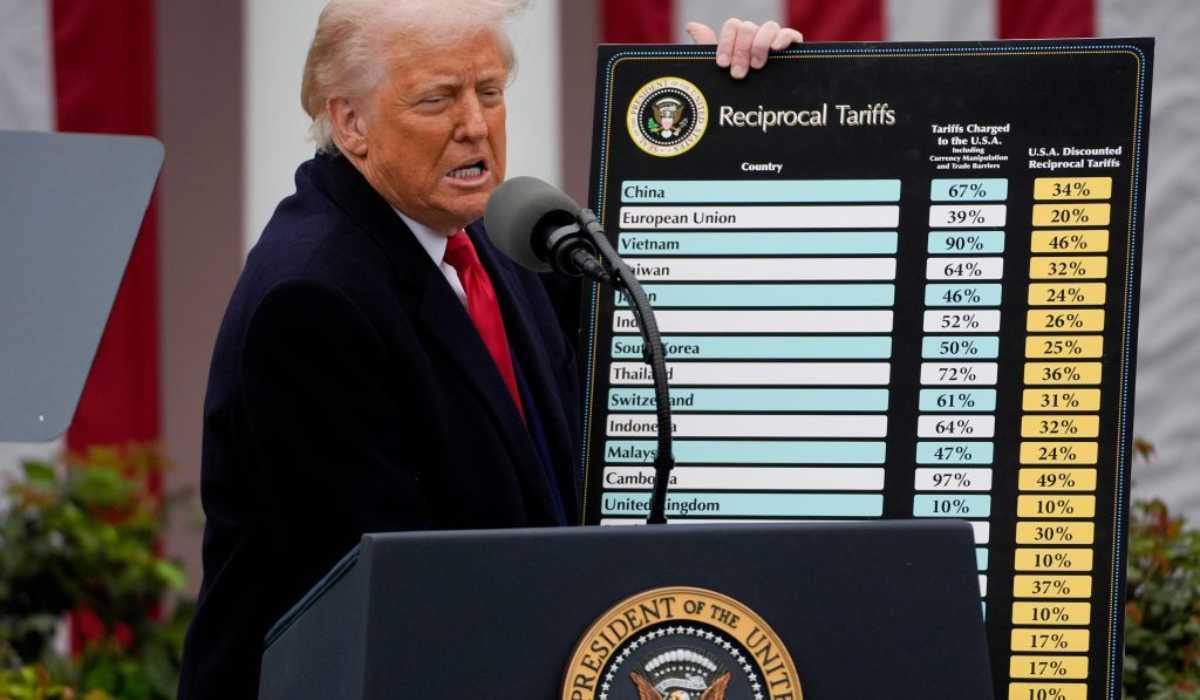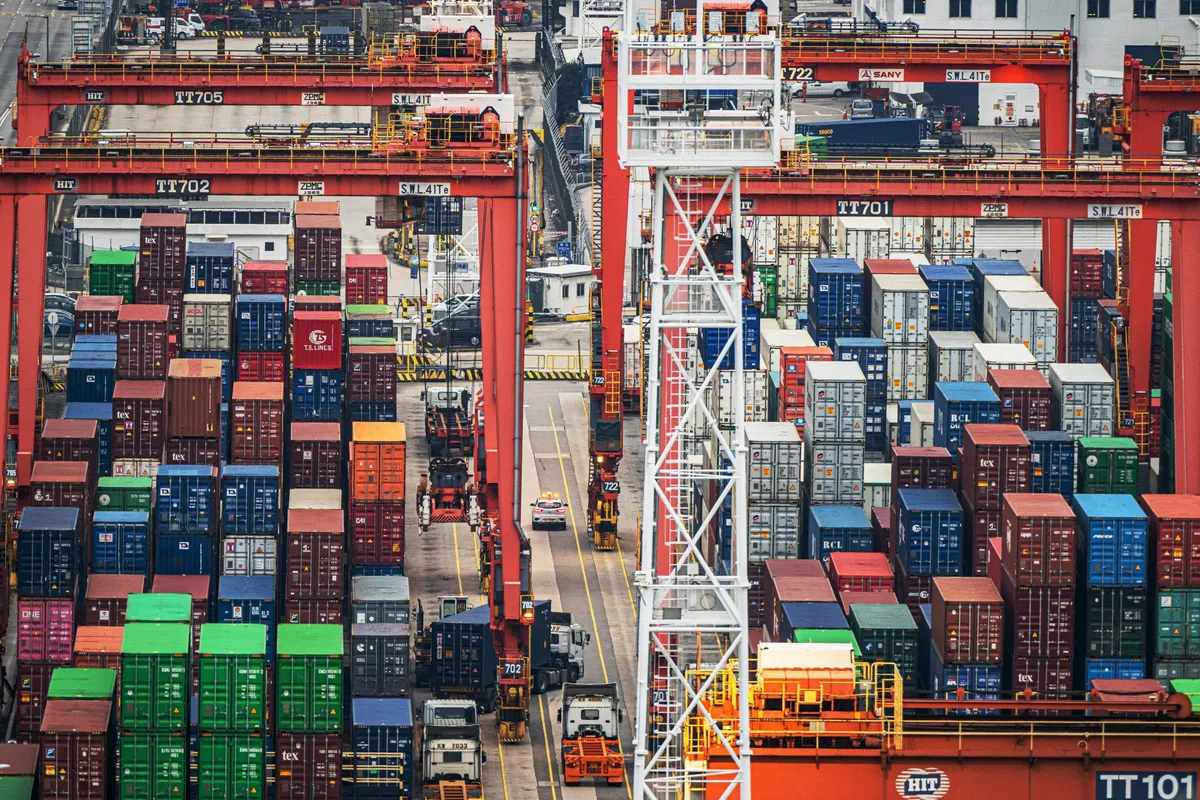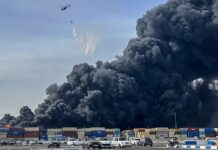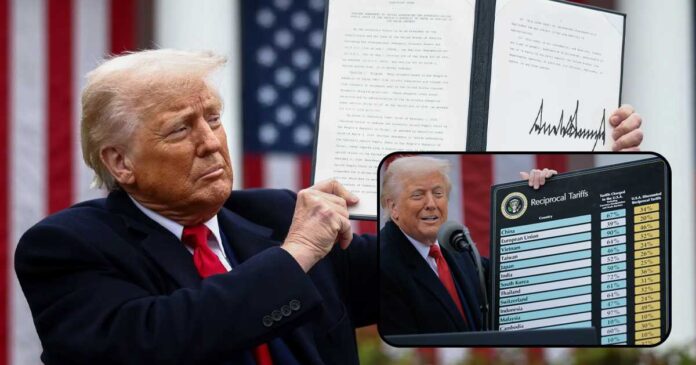On Wednesday, US President Donald Trump announced sweeping reciprocal tariffs. This includes a 10% flat tax on all US imports and has spared no country, especially those in Asia. These Trump tariffs provoked dismay from leaders worldwide and have hinted at a possible trade war with the world’s biggest economy.
Many other nations with higher trade imbalances would take a much bigger hit even when Trump said he had “sweetened the deal” and had only imposed half of what other countries charge him.
The Scope of Trump’s Tariffs: Why is He Doing This?
Donald Trump has consistently talked about the large US trade deficits with countries like China, Japan and the European Union as a sign of economic imbalance. According to statistics, the US has the largest trade deficit with China, making China the main target of these tariffs.
These Trump tariffs aim to narrow the trade deficit, which he believes will help American businesses grow and create more jobs in the country. Trump said the import taxes, ranging from 10% to 49%, would do to U.S. trading partners what they have long done to the U.S.
Higher tariffs will ultimately lead American consumers to buy the same goods locally, as the increased cost of imports makes domestic products more competitive. This, in turn, is expected to support U.S. manufacturers and strengthen local industries.
Read More: Trump Orders Cuts to VOA, Calls it “Radical Propaganda”
No Country was Spared
It’s not just China that has taken a hit. It has also impacted allies and major trade partners such as Canada, Mexico, the European Union and Japan. Despite strong opposition from allied nations, the tariffs were justified as a measure to reduce reliance on foreign production and boost domestic manufacturing. But many experts argue that the move disrupted supply chains and increased costs for American businesses and consumers.
With this news, financial markets were jolted. U.S. stocks were down by as much as 3% early Thursday and a 2.8% drop in Tokyo’s benchmark led losses in Asia. Oil prices sank more than $2 a barrel. Moreover, the burden falls heaviest on Asia-Pacific nations, with the highest tariffs for impoverished, financially precarious countries like Laos at a 48% tariff, Cambodia at 49% and Myanmar at 44%.

The Nations Are Reacting
Asian countries that are among the biggest exporters to the U.S. pledged to act quickly to support automakers and other businesses. South Korean Prime Minister Han Duck-soo told officials to work with business groups to analyse the impact of the new 25% tariff to “minimise damage,” the trade ministry said.
China’s commerce ministry said Beijing would “resolutely take countermeasures to safeguard its own rights and interests,” without saying exactly what it might do. With earlier rounds of tariffs, China has reacted by imposing higher duties on U.S. exports of farm products, while limiting exports of minerals used in high-tech industries such as electric vehicles.
Even the Canadian Prime Minister has taken the oath to fight these tariffs with “counter measures.”
Possible Implications of these Tariffs
While Trump is living up to his slogan of “making America great again,” the consumers and business corporations are viewing them in a different light. They believe these tariffs could hurt their budgets, slow down businesses and impact interest rate decisions.
Analysts have also warned that US tariffs could lead to a major global trade war that could push the US economy into a recession zone. If import prices go up, companies will not cut their profit margins to absorb the cost; instead, they pass the extra cost on to consumers, tightening household budgets. If tariffs remain high for an extended period, they could impact corporate expansion plans, new hiring and, in an effort to protect profits, lead to employee cost-cutting.
And let’s not just forget the countermeasures that have already been imposed.

The Future of U.S. Trade Policy
With Trump considering another run for office, questions remain about whether he would reinstate or expand his tariff policies. Whether seen as a necessary protectionist strategy or a disruptive force, their impact continues to reverberate worldwide. Will these Trump tariffs boost the domestic trade or just make the U.S trade policy worse?







































